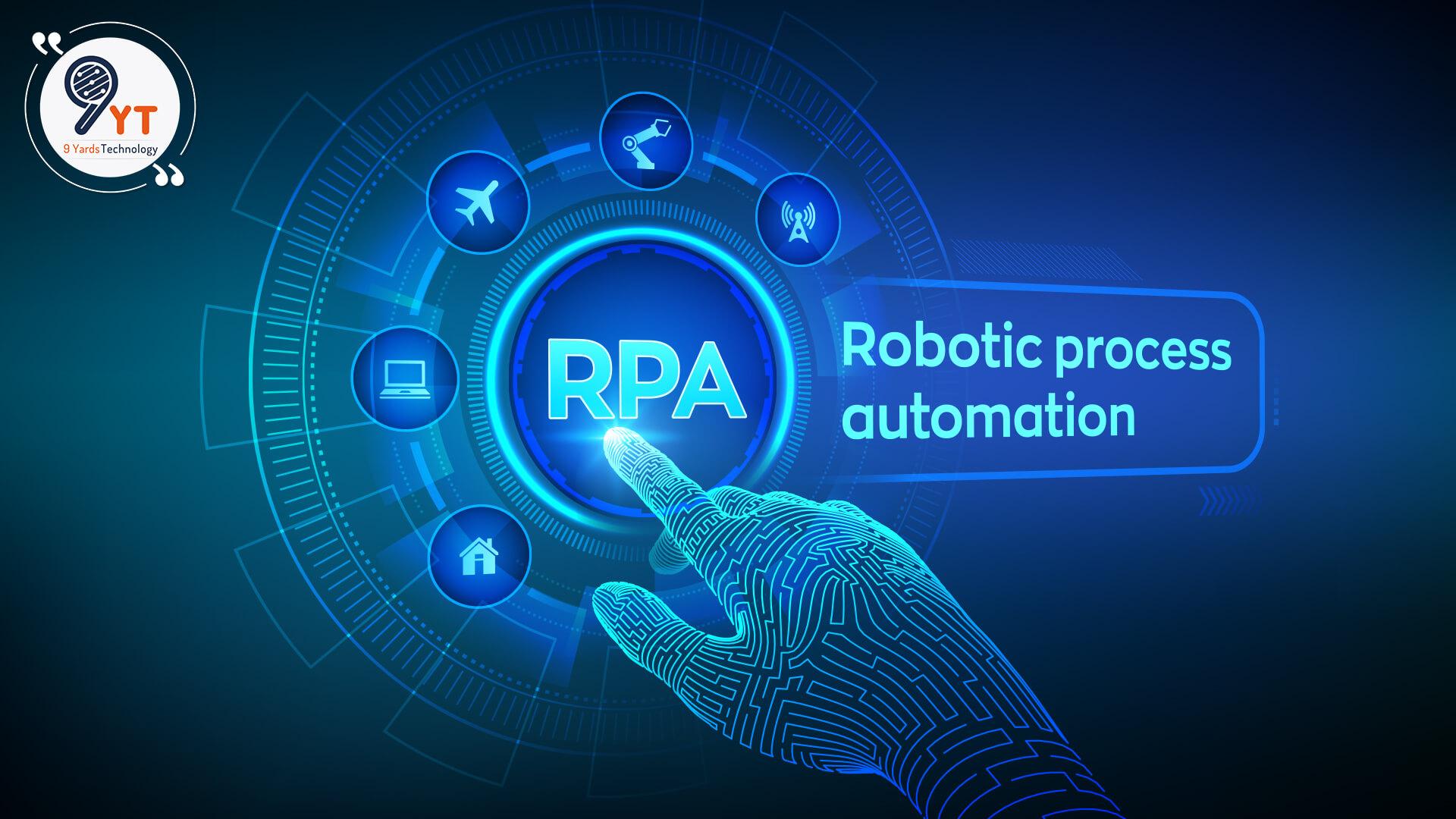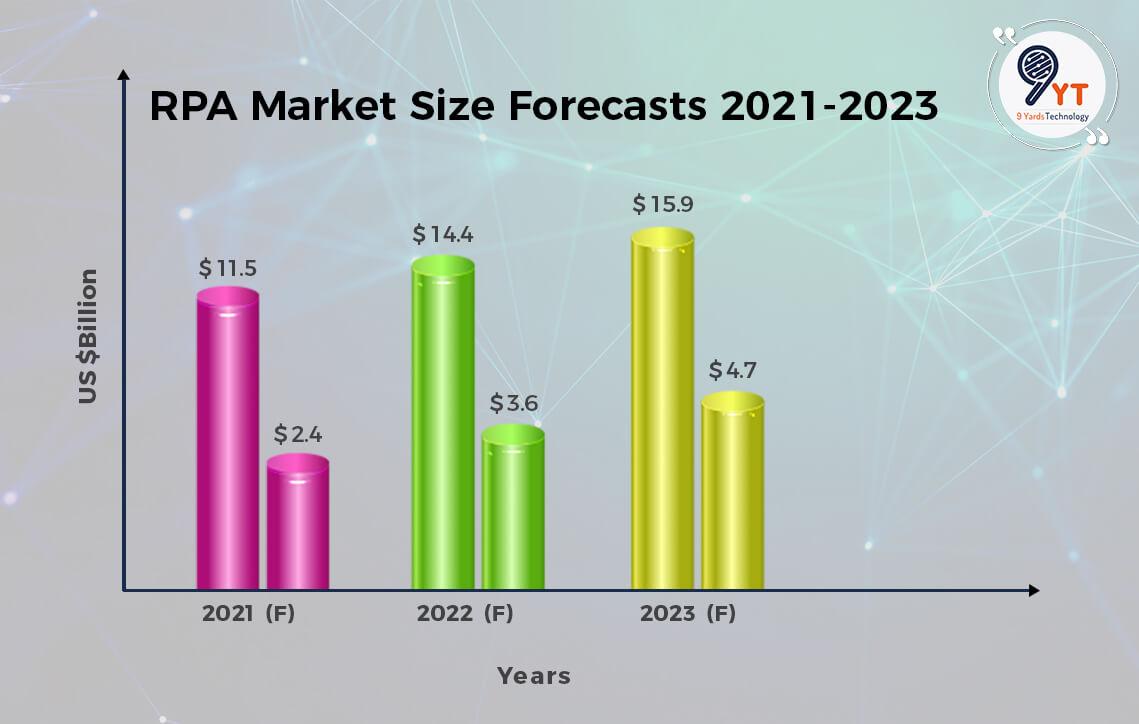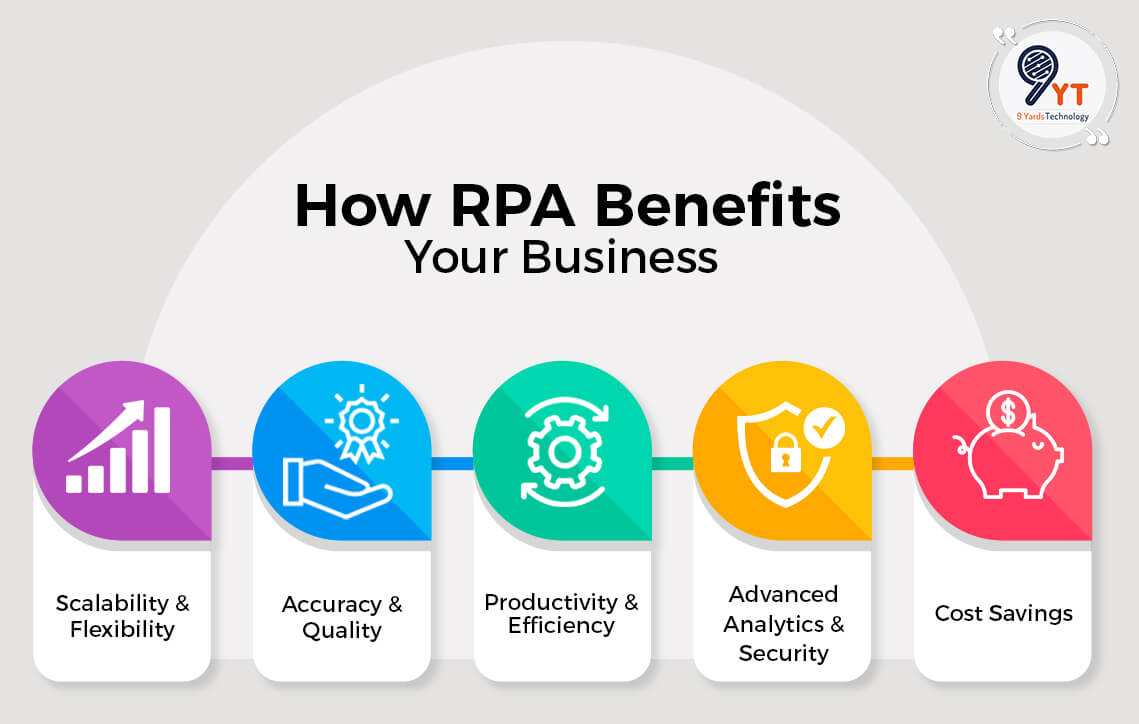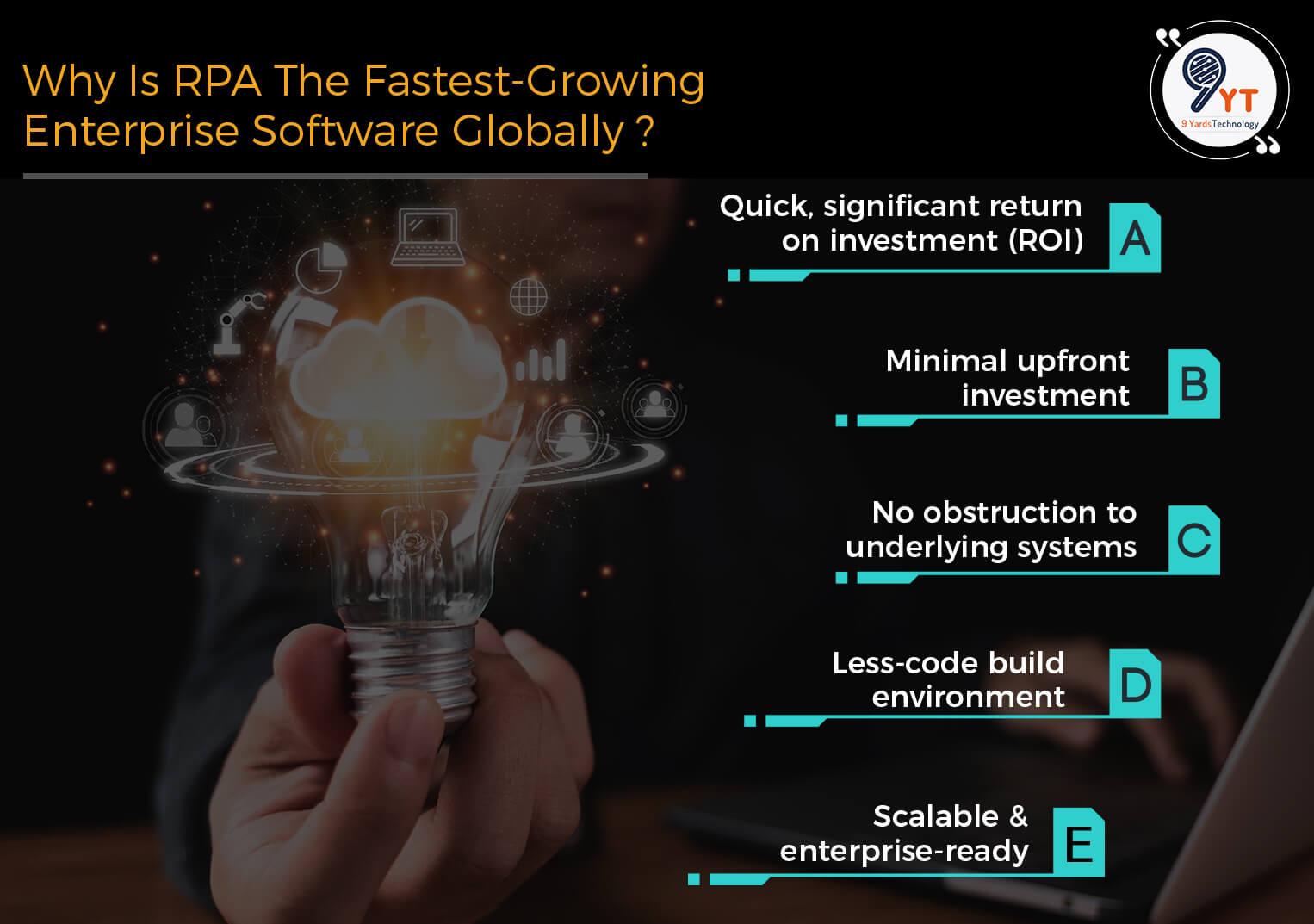
Repetitive tasks are boring, can often lead to errors, require capital, and consume excessive time as well as resources. As a business using these conventional methodologies lowers productivity which can ultimately lead to losses and put you behind the competitors. In this case, Robotic Process Automation turns out as a savior for business as it uses software automation technologies to automate tasks such as moving files, filling forms, extracting data, etc. It helps to tackle your repetitious & tedious tasks through automation. It integrates User Interfaces and APIs that combine repetitive tasks between productivity and enterprise applications.
In simple terms, Robotic process automation (RPA) is a software technology that enables the rapid development, implementation, and management of software robots that act as a human while executing tasks and interacting with digital systems and software.
Software robots, like humans, can understand what’s on the screen, perform the correct keystrokes, navigate systems, classify & retrieve data, and execute various defined actions. However, software robots can do it quickly with higher consistency than humans and don’t need to do activities like standing up and stretching or taking a coffee break.
Nanonet’s RPA Market Size Forecasts State

- The worldwide Robotic Process Automation industry was worth $1.40 billion in 2019 and is projected to reach $11 billion by 2027, growing at a 34% CAGR between 2020 and 2027.
- The industry for cohesive robotics is projected to reach $12 billion by 2025.
- According to Computer Economics 2020, RPA adoption rates are rising from 12% in 2019 to 20% in 2021.
- According to the Forrester image above, the Robotic Process Automation industry will generate approximately $22.5 billion by 2025.
- Based on the most recent Gartner, Inc. forecast, global robotic process automation (RPA) software end-user expenditure will reach $2.9 billion in 2022, a 19.5% increase from 2021.
- In 2021, the robotic process automation (RPA) market was projected to be worth USD 2.65 billion. From 2021 to 2030, this market is projected to expand at a CAGR of 27.7%.
How Robotic Process Automation (RPA) Benefits Your Business?
Robotic process automation expedites workflows, making organizations more profitable and adaptable. It also enhances employee satisfaction, involvement, and efficiency by removing mundane workday tasks. RPA is non-intrusive and can be installed easily to accelerate digital transformation. It’s also ideal for automating workflows encompassing legacy systems that lack APIs, virtual desktop infrastructures (VDIs), or database access.

- Less Coding Required
RPA does not always need to be configured by a developer; drag-and-drop features in user interfaces make it simpler to onboard non-technical staff. - Improves Employee Spirit
By easing your repetitious, high-volume chores, RPA frees up time for more considerate and strategic decision-making. This work shift has a positive impact on employee satisfaction. - Better Customer Satisfaction
Bots and chatbots can work around the clock; hence they can reduce customer wait times and offer fast responses to queries, thus resulting in higher customer satisfaction. - Enhanced Accuracy
Since RPA robots can be programmed to follow specific workflows and rules, you can reduce human error, especially in work that requires precision and adherence, such as regulatory standards. RPA can also provide an audit trail, making it easier to track progress and resolve issues. - Doesn’t Disrupt Existing Systems
Since bots work on the presentation layer of existing applications, robotic process automation software does not influence primary systems. The outcome, you can use bots even if you don’t have an applications programming interface (API) or the resources to create deep integrations. - Rapid Cost Savings:
Though RPA reduces team workload, staff can be redirected to other high-priority tasks that necessitate human intervention, resulting in increased productivity and ROI.
According To Uipath, The RPA Offers You An Edge In The Following Cases
- Revved Transformation: Among global executives, 63% say RPA is a major component in digital transformation.
- Significant Cost Savings: RPA drives rapid, significant improvement to business metrics across industries worldwide.
- Greater Stability: RPA robots can ramp up fast to match workload peaks and react to big demand spikes.
Raised Accuracy: 57% state RPA lowers manual errors. - Improved Compliance: 92% agree that RPA has ‘met or exceeded expectations for adequate compliance.
Boosted Productivity: 68% of global workers consider automation will make them more effective. - Higher Value From Personnel: 60% of executives agree that RPA enables people to focus on more strategic work.
- Happier Employees: 57% of executives say RPA increases employee engagement.
Robotic Process Automation (RPA) – How does it Work as a Transformative Agent?
Businesses can use robotic process automation in a range of ways. Most people use it to automate work tasks that are simple, repetitive, and simple to define. These processes are frequently made up of easily definable structured data and are rule-based.
RPA is now seeking innovative efficiencies and uplifting people from repeated tedium across a wide range of industries and procedures. RPA has been incorporated in numerous industries such as finance, legal, customer service, operations, and IT. Its vast industry ranges from healthcare to manufacturing from the public sector to retail etc.
How does Robotic Process Automation (RPA) Function?
According to Forrester, RPA software tools must include the following core capabilities:
- Automation scripts can be built using low code.
- Integration with business applications
- Configuration, monitoring, and security are all aspects of orchestration and administration.
RPA, for example, can access the data through legacy systems while also incorporating well with other applications via front-end integrations. This enables the automation platform to function like a human worker, conducting routine tasks like copying and pasting from one system to another, logging in, etc. Whereas back-end connections to databases and enterprise web services help with automation, the true value of RPA is in its quick and simple front-end integrations.
How Businesses Can Use Robotic Process Automation?
- Processing Of Payroll And Invoices
Payroll and invoicing are manual processes that are ideal for automation. RPA can automate data entry and some of the decision-making involved in invoice processing. - Customer Care
Automated customer service systems can quickly and precisely sort queries and respond to customers. Because customer service is built on rule-based processes, it is easily automated and streamlined. - Keeping Track Of Customer Information
RPA can also help with storing, organizing, and sorting customer information so that it is easily accessible. The system will automatically categorize and display different types of data. - Obtaining Sales Orders
RPA can relieve sales representatives of the time-consuming job of data entry into CRM systems. Not to mention that RPA can automate end-to-end sales activity tasks like invoicing, sales order entry, and so on. - Recruitment And HR Data Processing
RPA can also streamline recruiting by procuring CVs from various platforms, classifying spam, and evaluating value. It is also effective for analyzing employee data such as payroll, employee history, etc.
Why is RPA the Rapid-growing Organization Software All Over The World?
Organizations can easily use RPA after integrating its measurable value. It offers ease in deployment, which boosted its adoption rate globally.

- RPA can help many different industries address their specific operational issues in novel and powerful ways.
- According to leaders of functional areas ranging from finance to customer support to marketing to human resources and even beyond, RPA enhances many processes, offering greater capacity, quicker throughput, and fewer errors for key processes.
- Investing in RPA technology can help you provide quicker ROI than other enterprise technology; it requires minimal upfront spending from a CFO.
- IT executives discover that RPA can be executed with minimal disruption. And, because software robots can quickly access and work within legacy systems, RPA has emerged as a critical enabler of digital transformation. Modern RPA technology provides scalable, enterprise-ready platforms.
- Employees find it simple to integrate robotic assistants into their workdays, allowing them to create simple automation.
Shortcomings Of Robotic Process Automation (RPA)
- Organizational Structure
While RPA will minimize the requirement for certain job roles; it will also drive the creation of new roles to handle more complex tasks, allowing employees to concentrate on greater strategy and dynamic problem-solving. As obligations shift within job roles, organizations will need to establish a culture of innovation and learning. The versatility of a workforce will be crucial to the success of automation and digital transformation projects. You can train teams for ongoing shifts in preferences by educating employees through investing in training programs. - Scaling
Since RPA can perform multiple concurrent operations, scaling in an enterprise can be difficult due to regulatory updates or internal changes. According to a Forrester study, 52% of customers have difficulty scaling their RPA program. To qualify as an advanced program, an organization must have 100 or more active working robots, but few RPA initiatives progress beyond the initial ten bots.
Artificial Intelligence (AI) And Robotic Process Automation (RPA)
Robotic process automation (RPA) is not Artificial Intelligence (AI), and AI is not RPA. However, the combination of RPA and AI opens up a plethora of new opportunities for businesses worldwide. For example, RPA technology now allows advanced AI skills such as natural language processing (NLP), machine learning models, character, image recognition, and more to be integrated into RPA robots.
Giving robots these AI abilities significantly increases their ability to handle perceptual processes that require things like:
- Recognizing documents containing semi-structured or unstructured data
- Screen visualization (including virtual desktops)
- Understanding speech and participating in conversations and chats
Businesses must accelerate the integration of AI into front-line tasks and decisions; many are discovering that RPA can represent AI’s “last-mile” delivery system.
In a Nutshell!
Finally, Robotic Process Automation (RPA) is a revolutionary technology that helps businesses to accomplish more with less effort.
RPA applications such as process mining allow businesses to scientifically discover a broad range of automation possibilities and develop a robust automation pipeline. Furthermore, robots can be programmed to use machine learning models in automated decision-making processes, bringing machine intelligence into the heart of day-to-day operations.




